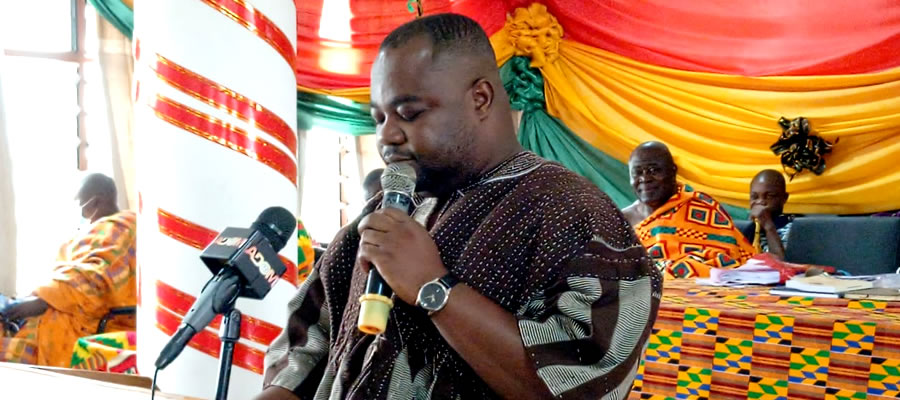

Location and Size
The District lies between Latitudes 70 00' N and 70 25'N and Longitudes 20 03' W and 20 15' W. It has a total land area of 837.4 square kilometers and constitutes about 1.8 percent of the total land area of the Brong Ahafo Region.
The topography of the district is undulating; rising gently from a height of about 270m to a peak of about 760m. The area is well drained by the Tano River and its numerous tributaries including Subri, Kwasu and Mankran, all of which generally flow from the North-East to the South–West.
Climate
The District lies in the semi–equatorial climatic zone and experiences double maxima rainfall regime, from April–June and September–November. The period between December and March is the dry season characterized by harsh harmattan conditions. The mean annual rainfall of the District is between 125cm and 180cm, and the mean monthly temperature ranges between 260 C (mainly in August) and 300C (in March). The relative humidity of the area is generally high, between 75 percent and 80 percent during the rainy season and 70 percent and 72 percent in the dry season.
Vegetation
The district has two main vegetation types, the moist semi-deciduous forest, mostly in the southern and south-eastern parts with gross forest cover of about 157.45sq km of which close to 80 percent (132.52sq km) is covered by the following three main forest reserves: Aparipari, Bosomkese and Omankwayemu Forest Reserves. The second dominant vegetation type is the guinea savanna found in the northern and north western parts around Subriso and Yamfo where cattle rearing is predominant (Tano North, 2010).
Geology
The geology of the District is basically of the Middle Precambrian Formation with a lot of weathered Birimian rocks, phychites and schist which bear substantial deposits of red and white clay in the basin of the Tano River around Tanoso. There are also vast deposits of gold in the areas around Yamfo, Tanoso, Terchire and Adrobaa2. The dominant soil type of the area is forest ochrosols and is generally considered to be fertile and suitable for the cultivation of a wide range of arable crops such as cocoa, coffee, oil palm, plantain, maize, citrus and vegetables
Date Created : 12/5/2017 3:25:59 AM












 facebook
facebook
 twitter
twitter
 Youtube
Youtube
 +233 593 831 280
+233 593 831 280 0800 430 430
0800 430 430 GPS: GE-231-4383
GPS: GE-231-4383 info@ghanadistricts.com
info@ghanadistricts.com Box GP1044, Accra, Ghana
Box GP1044, Accra, Ghana